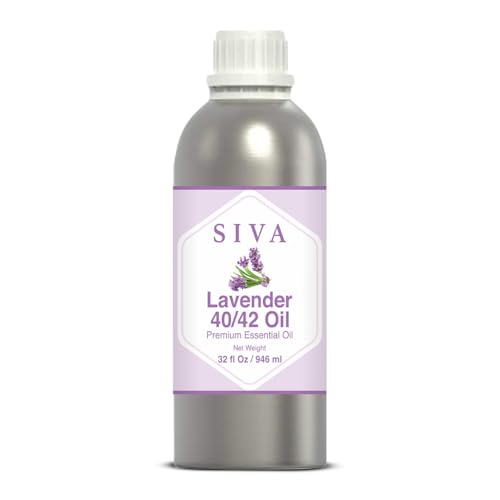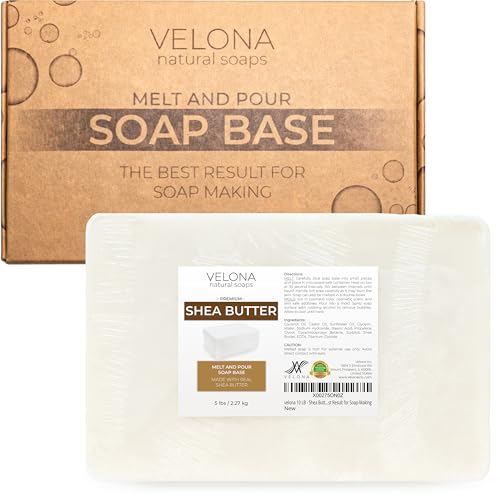akseattle
Well-Known Member
Okay, I'm looking to this forum for some more guidance. This time for stearic acid.
I would like to incorporate stearic acid into a recipe. This will be my first time using it.
The recipe I’ve run through SoapCalc is a deviation from my basic recipe- same oils, different percentages. My goal is to get a reasonably hard, creamy, soothing bar with reasonable lather for dry skin. For a 450 gram batch of oil the recipe is:
Lard: 25%, Beef Tallow 14%, Coconut Oil 22%, Olive Oil 20%, Castor Oil 12%, Shea Butter 6%, Stearic Acid 1%, 5% Superfat and 38% lye concentration, 2 tsp sugar, 1 tsp salt, 1 TBsp colloidal oats
I will avoid floral FO’s to not contribute to acceleration- at least until I have a better sense for using stearic acid and colloidal oats (just used colloidal oats for the first time last week.) Also, last week was the first time I used a higher lye concentration. Although I'd like to graduate to 40% lye concentration, since I'm adding something that might accelerate, I'm going to hold my horses for now....
I’ve looked at various discussions on this forum and elsewhere on the internet.
Based on a 3/18/2018 discussion and then a later 1/10/2021 discussion in which both @Amd and @DeeAnna participated, it seems that 1 % stearic acid will increase hardness without accelerating trace in too big of a way. I think @Amd did some comparison tests and settled on 1%.
I also understand that I should heat the hard oils (in particular the stearic acid) to about 160 ͦ to make sure the stearic acid melts. I usually melt all my hard oils in the microwave oven then add to the soft oils which I heat on the stove and finish heating them together (usually to 150F-160F.)
I saw recommendations for soaping “high” to avoid stearic spots. By “soaping” I assume this means the temperature of the oils when you combine the oils & lye water (not just how high you heat the oils.)
Soap Queen says “it needs a hotter soaping temperature (at least 160F.) Maybe she meant just heat the oil to that temperature but not actually combine with lye water at that temperature? In a discussion, someone refer to 100F as being soaping high as they usually soap at 70F (100F seems low to me.) Others recommended soaping at 120F to 130F.
So, I am wondering, what is a good temperature at which to combine the oils and lye water (which I think is what is meant by soaping?)
Also, I ordinarily add 2 tsp of sugar and 1 tsp of salt to my soaps (500 g of oil). I would like to also add 1 TBsp of colloidal oats.
Is the salt (which I add for hardness) PLUS the stearic acid too much? I have read that too much salt neutralizes the benefit of the sugar (to add bubbles.)
Will the combined salt & stearic acid neutralize the sugar?
Or, should I skip the salt?
I’m using stearic acid because I got it at a great price at a local craft shop (and I’m a sucker for a bargain…)
On stearic acid spots: I once got some white spots on my soap that was 32% palm oil. I think those were stearic spots. Even though it took them at least a couple weeks to show up.
Thank you in advance!!
I would like to incorporate stearic acid into a recipe. This will be my first time using it.
The recipe I’ve run through SoapCalc is a deviation from my basic recipe- same oils, different percentages. My goal is to get a reasonably hard, creamy, soothing bar with reasonable lather for dry skin. For a 450 gram batch of oil the recipe is:
Lard: 25%, Beef Tallow 14%, Coconut Oil 22%, Olive Oil 20%, Castor Oil 12%, Shea Butter 6%, Stearic Acid 1%, 5% Superfat and 38% lye concentration, 2 tsp sugar, 1 tsp salt, 1 TBsp colloidal oats
I will avoid floral FO’s to not contribute to acceleration- at least until I have a better sense for using stearic acid and colloidal oats (just used colloidal oats for the first time last week.) Also, last week was the first time I used a higher lye concentration. Although I'd like to graduate to 40% lye concentration, since I'm adding something that might accelerate, I'm going to hold my horses for now....
I’ve looked at various discussions on this forum and elsewhere on the internet.
Based on a 3/18/2018 discussion and then a later 1/10/2021 discussion in which both @Amd and @DeeAnna participated, it seems that 1 % stearic acid will increase hardness without accelerating trace in too big of a way. I think @Amd did some comparison tests and settled on 1%.
I also understand that I should heat the hard oils (in particular the stearic acid) to about 160 ͦ to make sure the stearic acid melts. I usually melt all my hard oils in the microwave oven then add to the soft oils which I heat on the stove and finish heating them together (usually to 150F-160F.)
I saw recommendations for soaping “high” to avoid stearic spots. By “soaping” I assume this means the temperature of the oils when you combine the oils & lye water (not just how high you heat the oils.)
Soap Queen says “it needs a hotter soaping temperature (at least 160F.) Maybe she meant just heat the oil to that temperature but not actually combine with lye water at that temperature? In a discussion, someone refer to 100F as being soaping high as they usually soap at 70F (100F seems low to me.) Others recommended soaping at 120F to 130F.
So, I am wondering, what is a good temperature at which to combine the oils and lye water (which I think is what is meant by soaping?)
Also, I ordinarily add 2 tsp of sugar and 1 tsp of salt to my soaps (500 g of oil). I would like to also add 1 TBsp of colloidal oats.
Is the salt (which I add for hardness) PLUS the stearic acid too much? I have read that too much salt neutralizes the benefit of the sugar (to add bubbles.)
Will the combined salt & stearic acid neutralize the sugar?
Or, should I skip the salt?
I’m using stearic acid because I got it at a great price at a local craft shop (and I’m a sucker for a bargain…)
On stearic acid spots: I once got some white spots on my soap that was 32% palm oil. I think those were stearic spots. Even though it took them at least a couple weeks to show up.
Thank you in advance!!















































